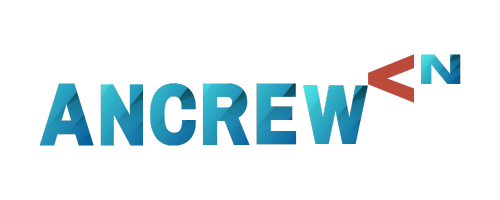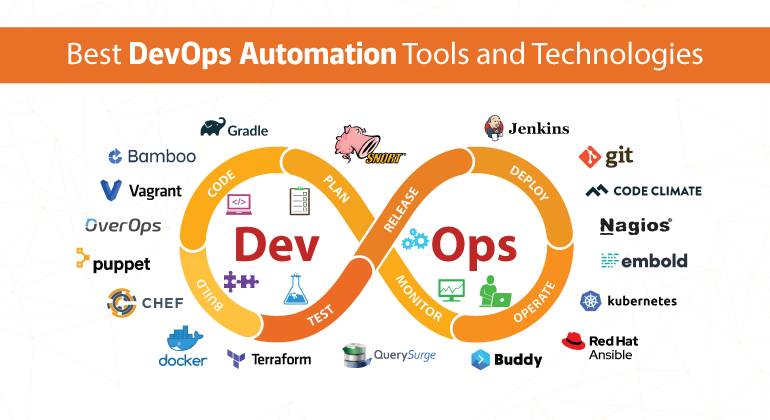What Exactly Are DevOps Automation Tools?
DevOps automation tools are essential for IT companies to streamline their software development and deployment processes, enabling them to deliver high-quality software faster and more efficiently. Here are some commonly used DevOps automation tools.
1. Jenkins: Jenkins is one of the most widely used open-source automation servers. It helps automate the building, testing, and deployment of applications. Jenkins supports integration with various version control systems and offers a vast number of plugins that facilitate continuous integration and continuous delivery (CI/CD) pipelines.
2. GitLab CI/CD: GitLab provides an integrated CI/CD platform that is tightly coupled with its version control capabilities. It allows developers to define pipelines using .gitlab-ci.yml files, automating tasks like building, testing, and deploying applications. This implies that teams may trace changes to their code, revert to prior versions if necessary, and cooperate on code development. With Git, several developers can work on the same codebase at the same time, and changes can be readily merged and reconciled.
3. CircleCI: CircleCI is a cloud-based CI/CD platform that offers powerful automation capabilities. It integrates seamlessly with popular version control systems and enables developers to create complex workflows through configuration files.
4. Travis CI: Travis CI is a CI/CD service primarily used for testing and deploying code hosted on GitHub repositories. It provides a simple configuration setup and supports multiple programming languages.
5. TeamCity: TeamCity is a CI/CD tool developed by JetBrains. It offers a robust platform for building, testing, and deploying applications. TeamCity supports various build and deployment configurations and can integrate with other development tools.
6. Ansible: Ansible is an open-source automation tool that focuses on configuration management, application deployment, and task automation. It uses a declarative language to describe infrastructure and application states, making it easy to manage complex environments. It offers a straightforward yet powerful method for automating the deployment and management of apps, servers, and other IT infrastructure. Ansible describes the desired state of infrastructure using a declarative language, making it simple for even non-technical users to automate processes. Ansible playbooks outline the procedures required to configure systems and deploy applications, and they can operate on numerous platforms at the same time.
7. Chef: Chef is a powerful automation tool that allows you to define infrastructure as code. It provides the ability to manage configurations, enforce policies, and automate application deployments across a wide range of systems. It makes it easier to install and maintain infrastructure at scale by automating the configuration and management of servers, networks, and applications. Chef allows teams to define the desired state of their infrastructure using recipes written in Chef, a domain-specific language. Chef will provision and configure the infrastructure to achieve this desired condition. Chef is a flexible solution for managing infrastructure across many environments because it supports multiple operating systems and cloud platforms.
8. Puppet: Puppet is another configuration management tool that enables IT teams to automate the provisioning, configuration, and management of infrastructure. It uses a domain-specific language to define system configurations.
9. Docker: While Docker is primarily known for containerization, it also plays a crucial role in DevOps automation. Docker allows you to package applications and their dependencies into containers, ensuring consistency across different environments.
10. Kubernetes: Kubernetes is an open-source container orchestration platform that automates the deployment, scaling, and management of containerized applications. It helps IT companies manage complex microservices architectures efficiently. It is commonly used in DevOps to manage large-scale, complicated applications. Kubernetes automates the deployment, scaling, and management of containers, which are lightweight software units that may be transported between environments. Using Kubernetes, teams may declare the desired state of their application using manifests written in YAML, a domain-specific language.
Kubernetes will manage and provision the containers to achieve this desired condition.
11. Terraform: Terraform is an infrastructure as code (IaC) tool that enables you to define and manage infrastructure using a declarative configuration language. It supports multiple cloud providers and helps automate the provisioning of resources. It is a popular open-source infrastructure as code (IaC) tool in the DevOps community. It enables the definition and management of infrastructure as code, such as servers, networks, and databases, making it easier to automate and version infrastructure modifications. With Terraform, teams may use a declarative language to express the desired state of their infrastructure, and Terraform will take care of provisioning and configuring the infrastructure to meet this desired state. Terraform is a flexible tool for managing infrastructure across many settings because it supports multiple cloud platforms as well as on-premises infrastructure.
12. Spinnaker: Spinnaker is a multi-cloud continuous delivery platform that assists in deploying applications to various cloud environments. It offers advanced deployment strategies, such as canary releases and blue-green deployments.
These tools are not exhaustive, and there are many other tools available to support various aspects of the DevOps process. The choice of tool(s) will depend on the specific needs and requirements of your organization, but by automating various tasks and processes, these tools can
help speed up the software development life cycle, improve reliability and stability, and reduce errors and downtime.



